Balenciaga Spring 2026 Collection
In a powerful debut that felt both reverent and revolutionary, Pierpaolo Piccioli reimagined the house of Balenciaga as a dialogue between eras — a meeting of Cristóbal’s sculptural purity, Nicolas Ghesquière’s futurism, Demna’s irony, and his own deep-seated romanticism.
Gone are the days of scorched-earth debuts. The new mood in Paris is one of continuity, respect, and evolution — and perhaps no one embodied that better than Piccioli on Saturday night, when he unveiled his vision for Balenciaga. His approach was deliberate, calm, and assured, drawing a seamless line from the master’s atelier in the 1950s to the sleek digital catwalks of today.
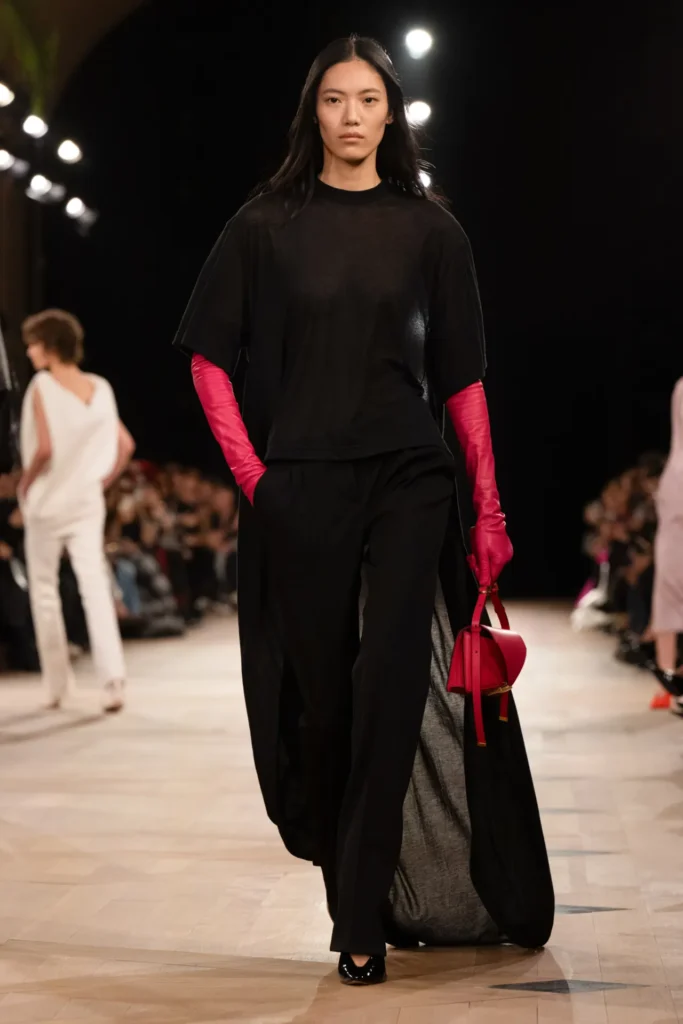
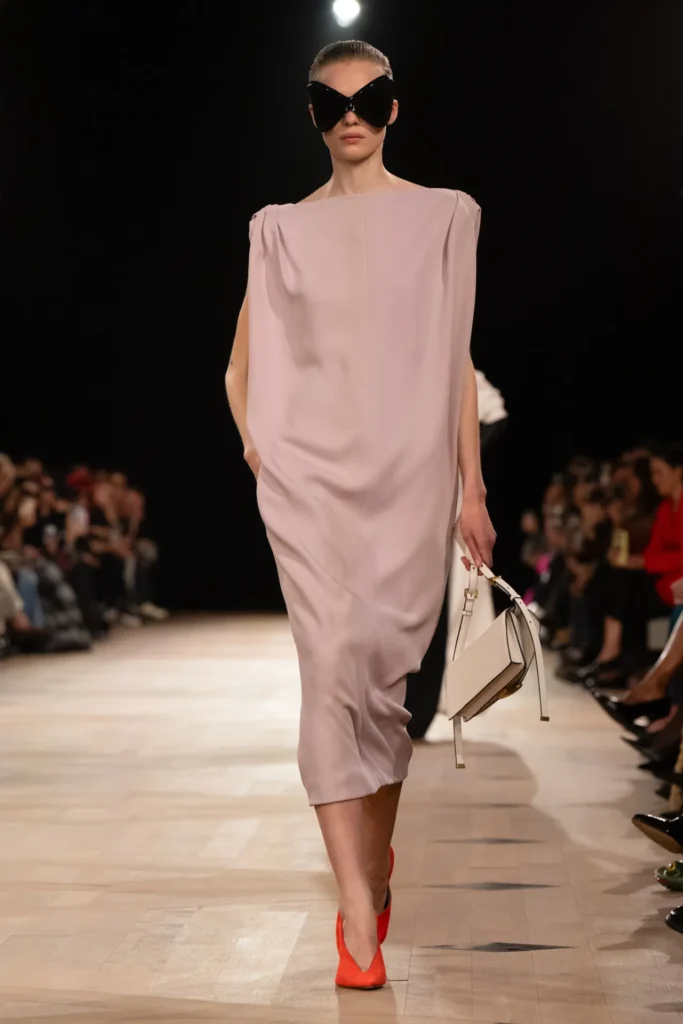
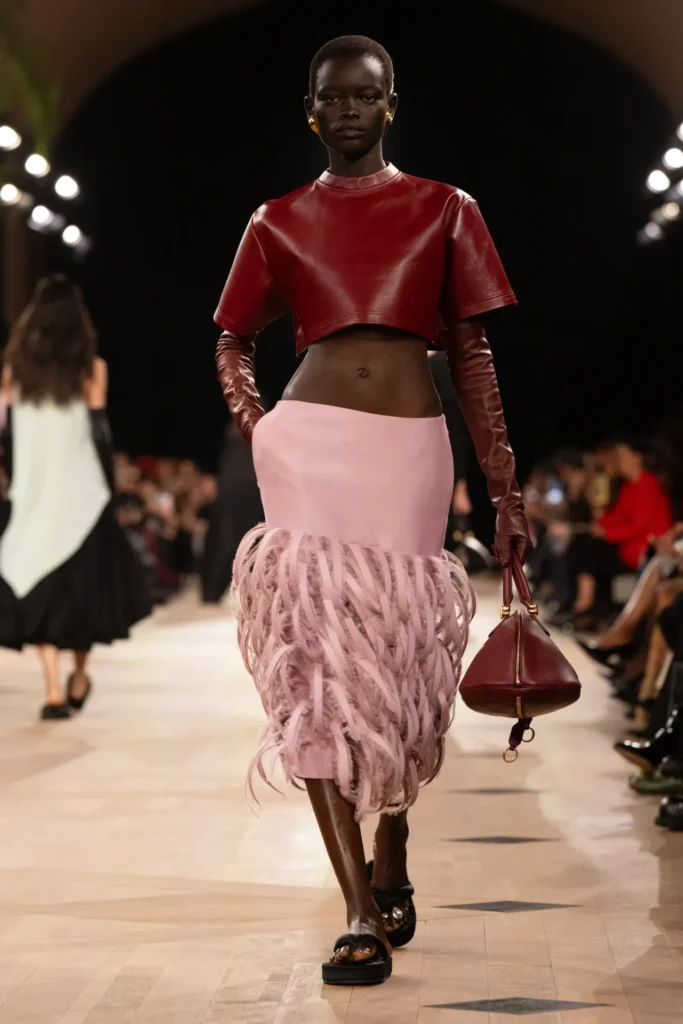
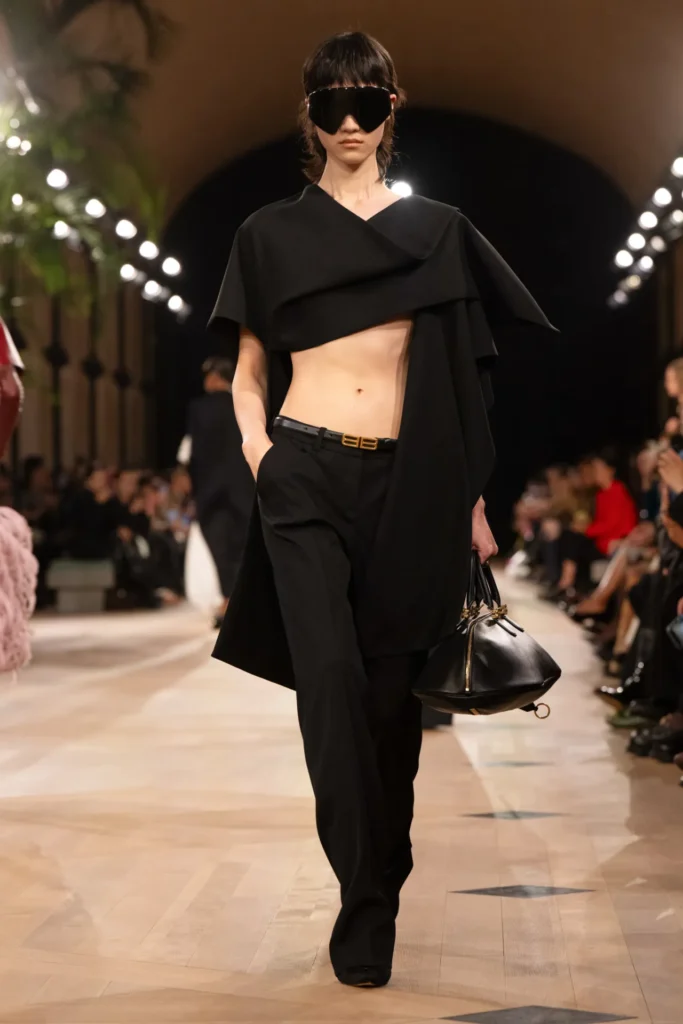
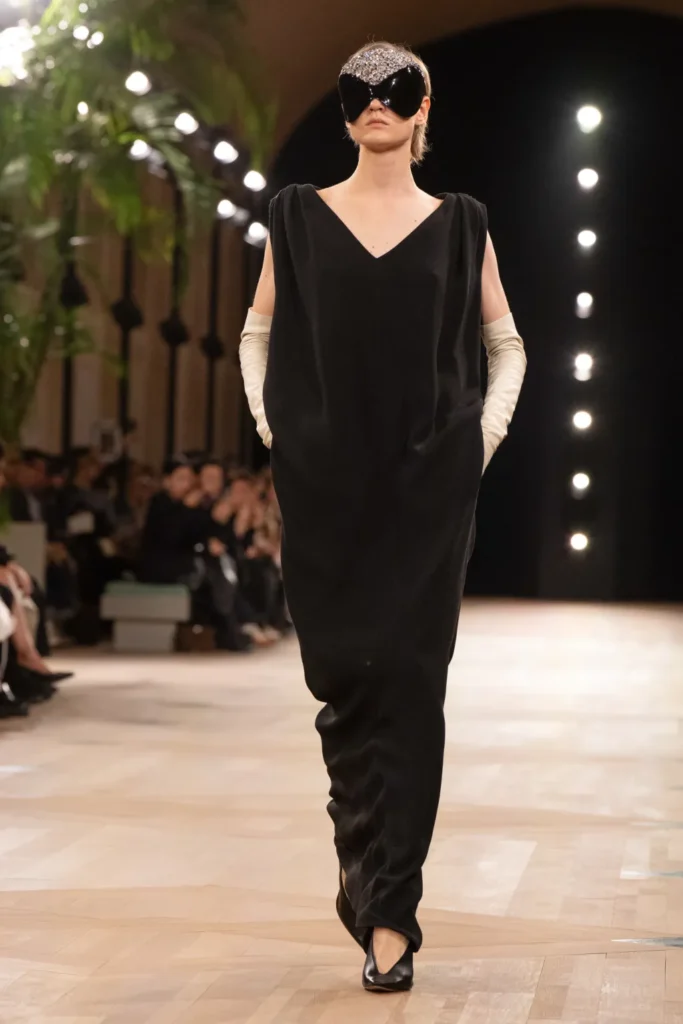
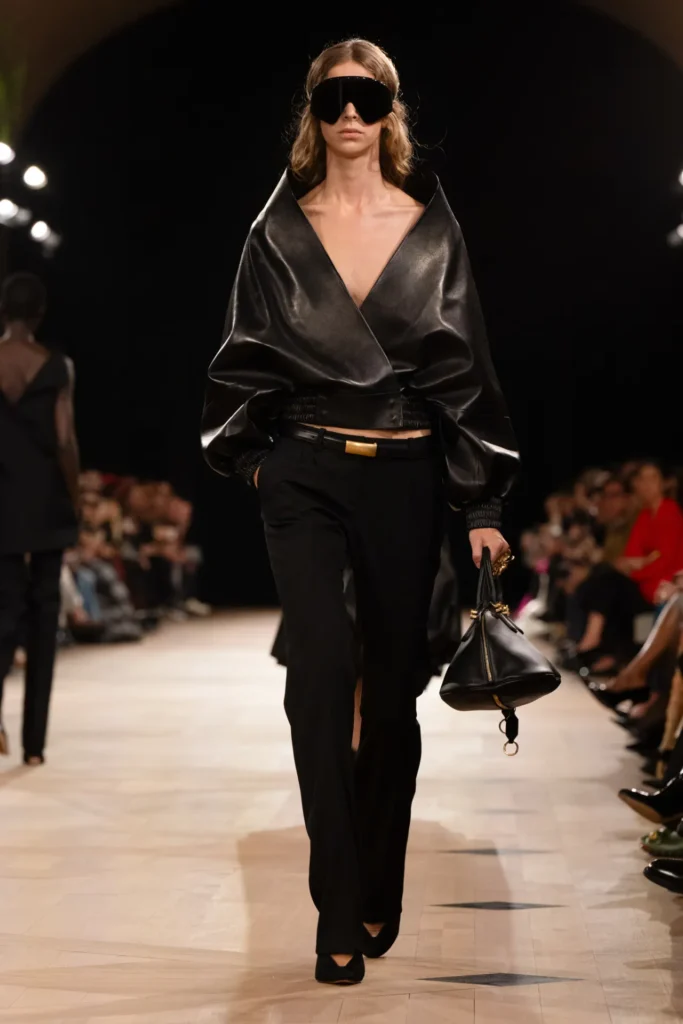
The show began in near silence, the hum of anticipation cut by the echo of a single heel. Out came the first look: a sleeveless black sack dress, its architecture impeccable, paired with oversized bug-eyed sunglasses. In that instant, Piccioli’s method was revealed — stripping down to the essentials to rebuild from the core.
There were, of course, countless nods to Cristóbal Balenciaga himself. The legendary 1967 wedding ensemble — famously inspired by monastic shapes and, as fashion lore has it, by Darth Vader — returned in new guises: one as a crisp white shirt, another as a leather cape, each modernized with quiet irreverence. Bubble skirts and voluminous tulip silhouettes followed, some crafted in glossy black leather, others rendered in duchess satin that caught the light like liquid sculpture.
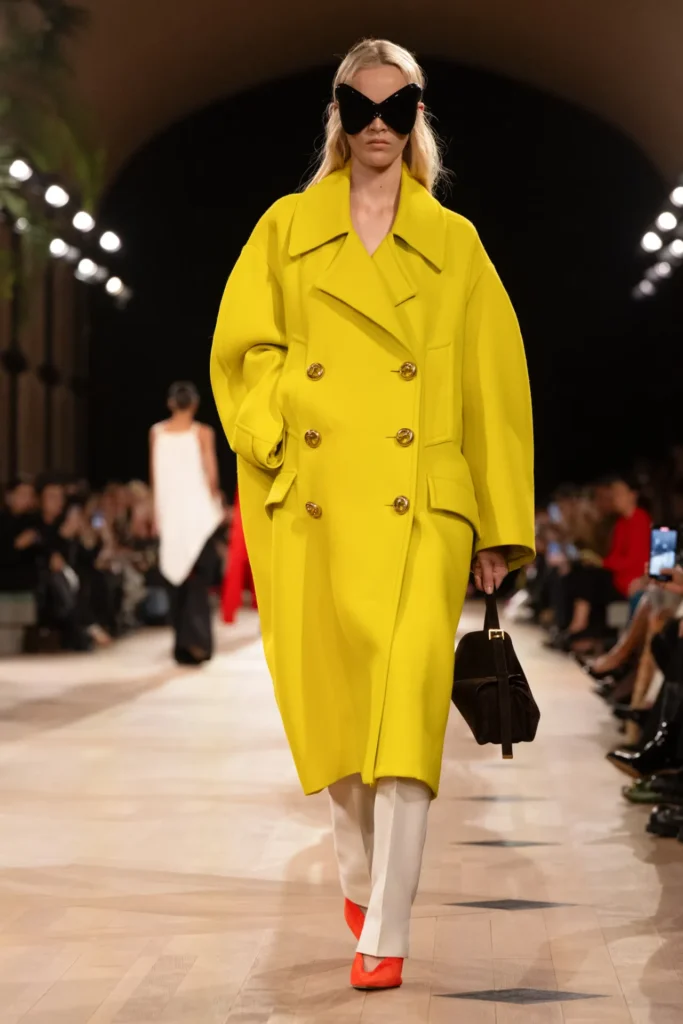
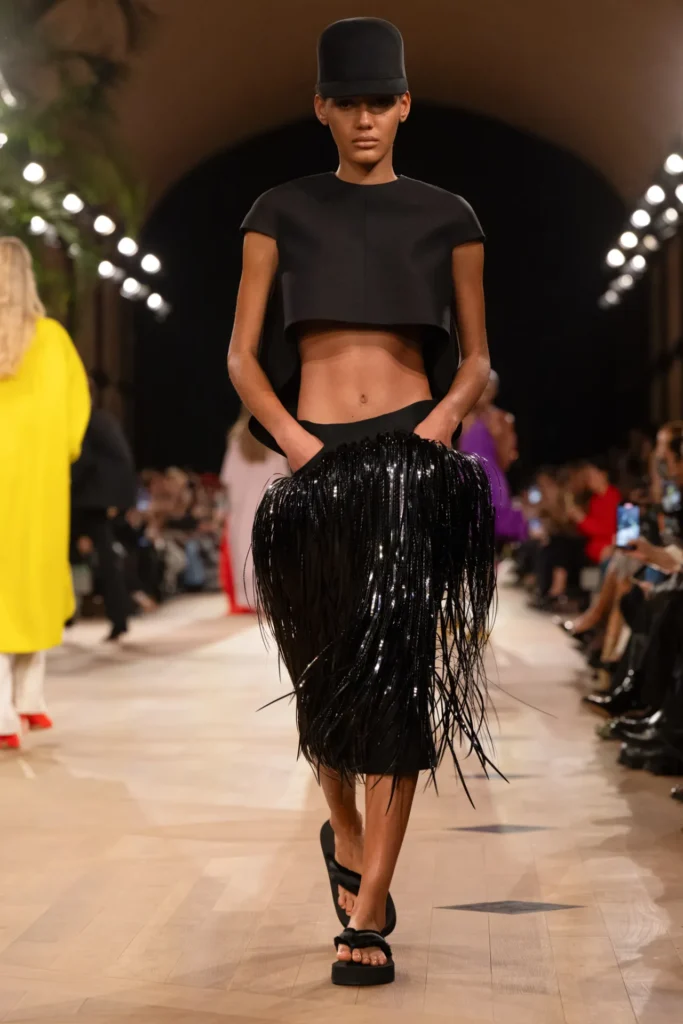
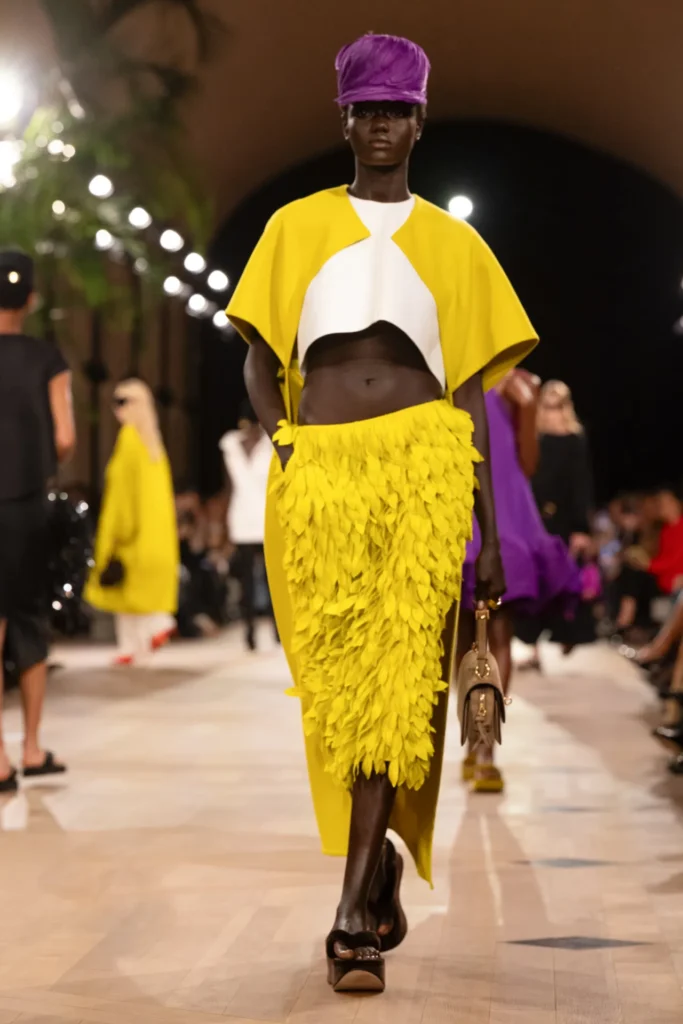
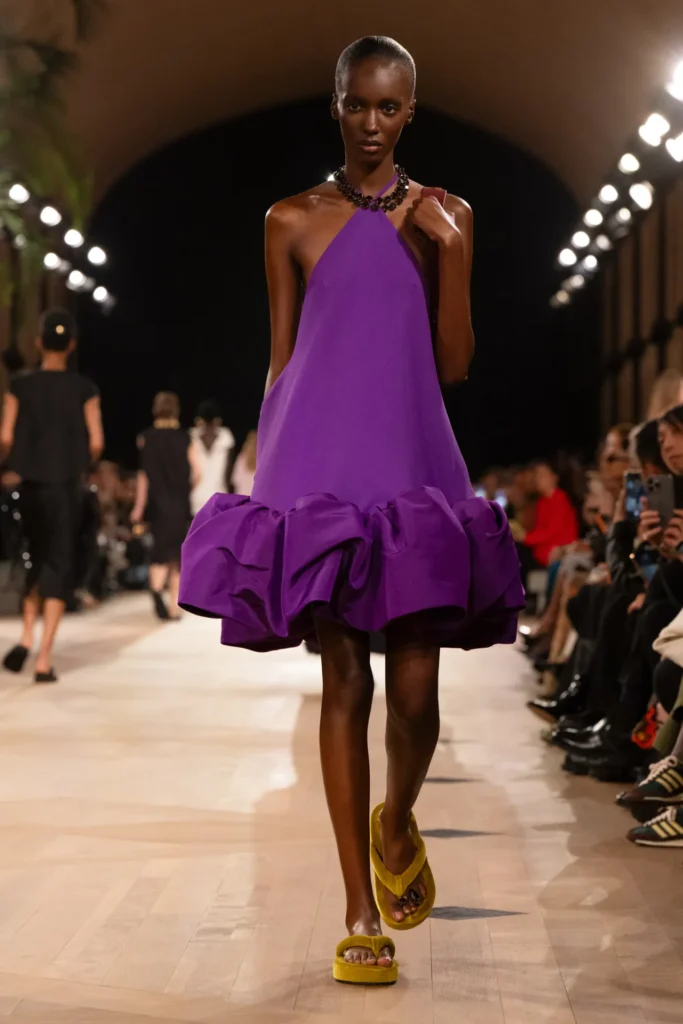
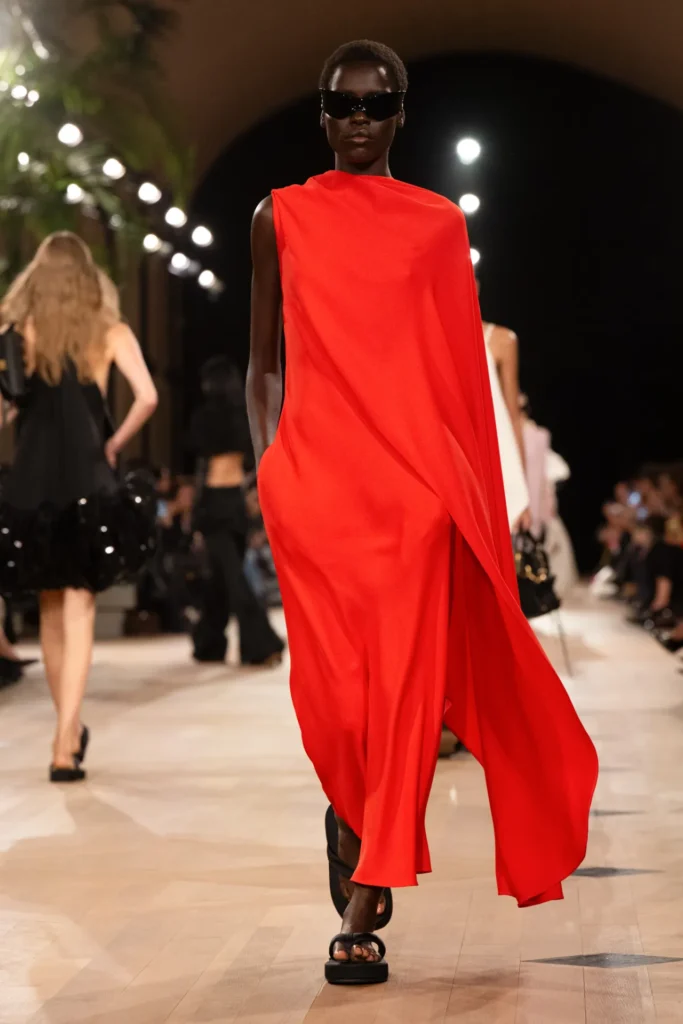
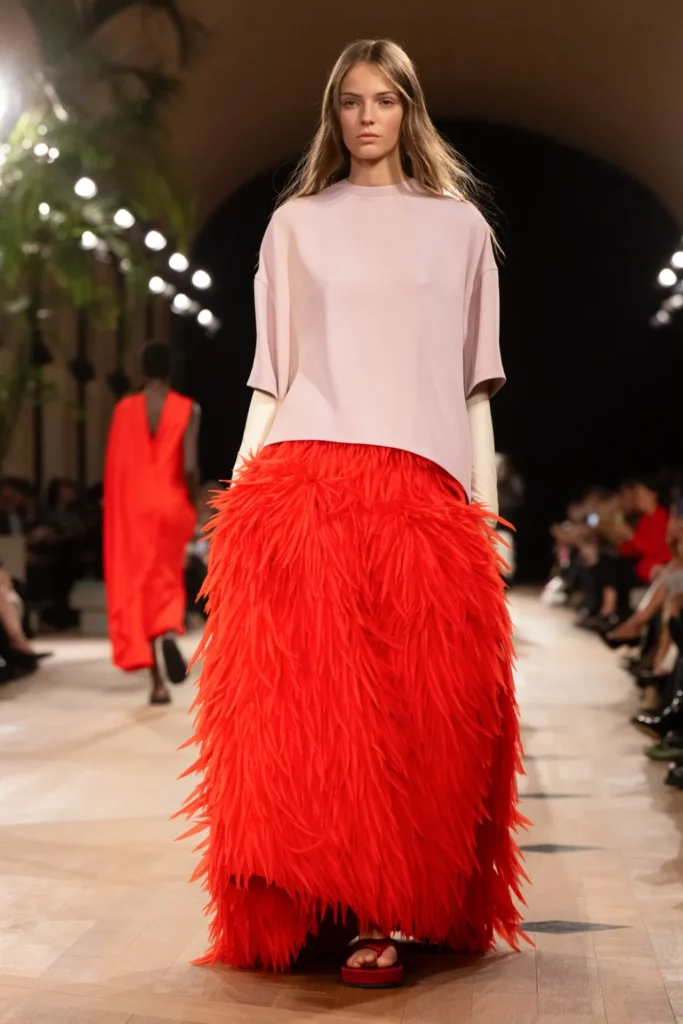
The sack dress, which once defied the era’s hourglass ideal, became a manifesto once more — this time for freedom, fluidity, and form without constraint.
Yet the collection wasn’t all archival reverence. Piccioli wove in clear tributes to the house’s 21st-century guardians. The tall riding hats and oval coats with bold buttons nodded to Ghesquière’s beloved Fall 2006 collection, while the oversized and miniaturized versions of the iconic Le City Bag — Ghesquière’s breakout accessory from 2001 — drew knowing smiles from the audience. Meanwhile, distressed wide-leg denim and torn khaki shorts conjured the streetwise rebellion of Demna’s Balenciaga, minus the mud but not the attitude.
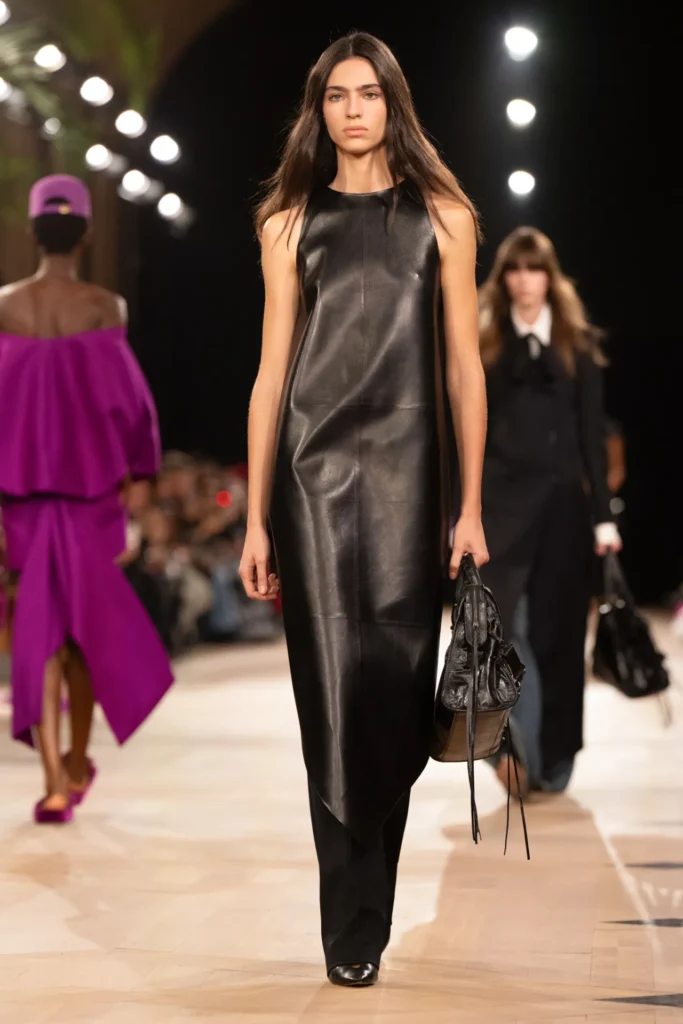
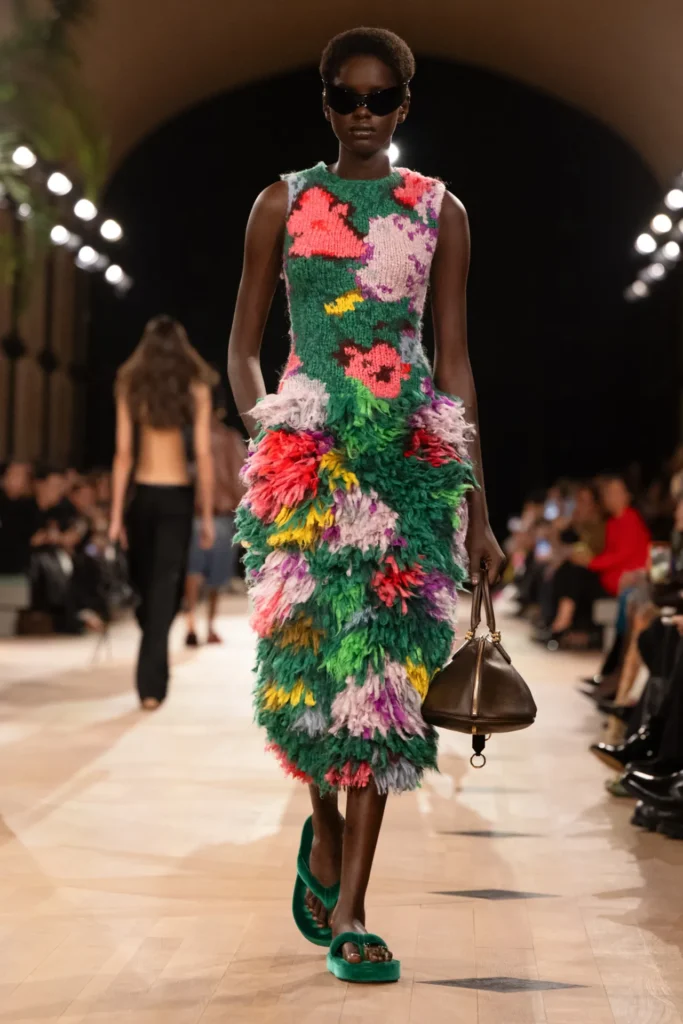
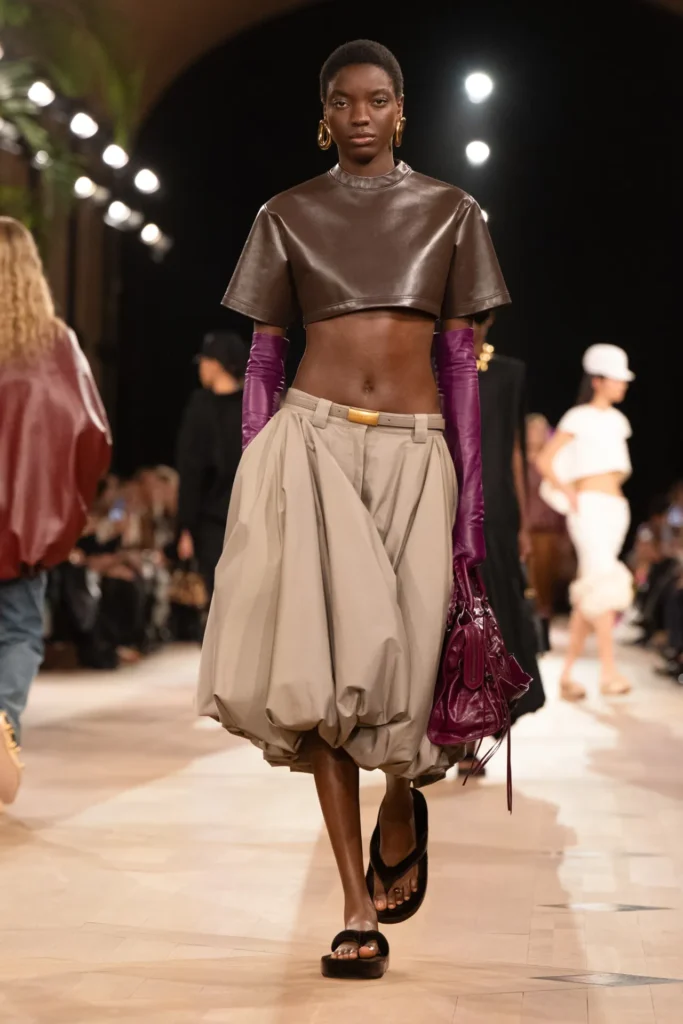
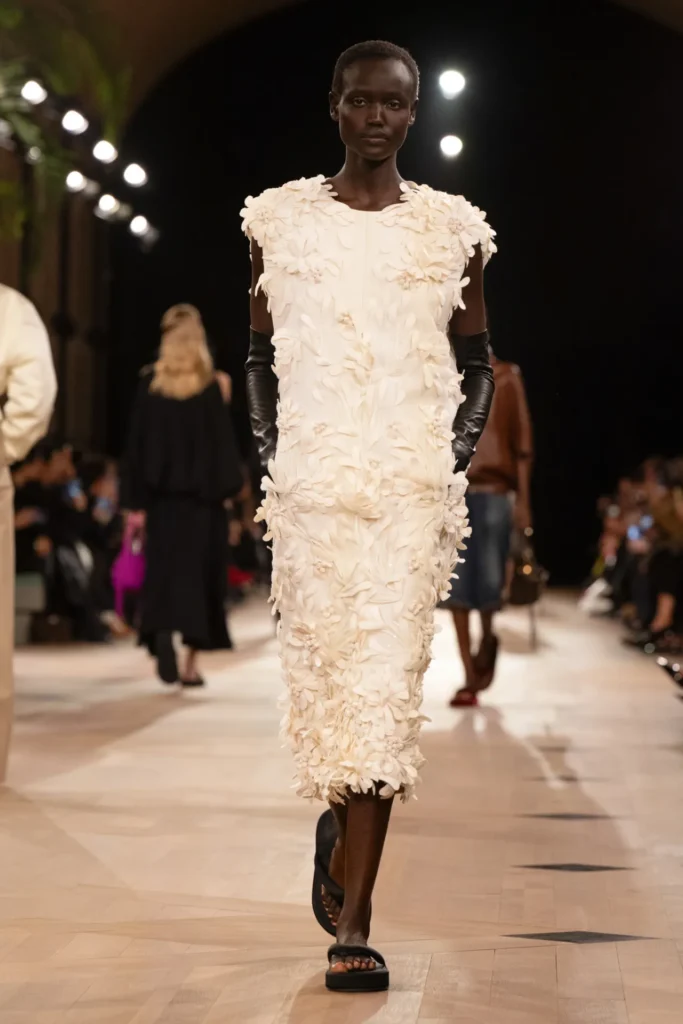
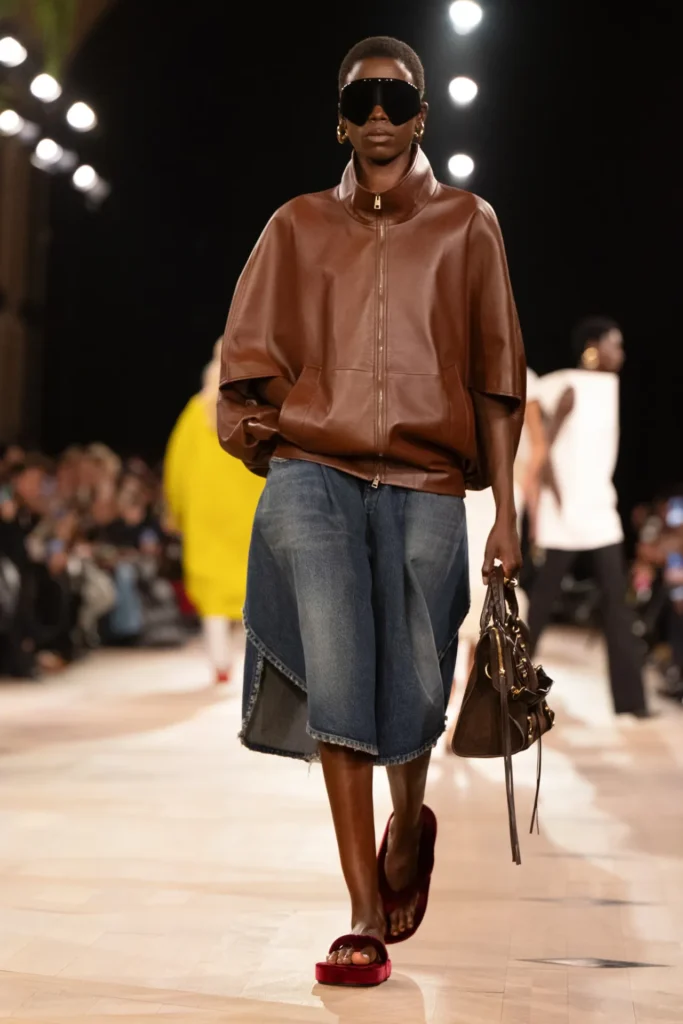
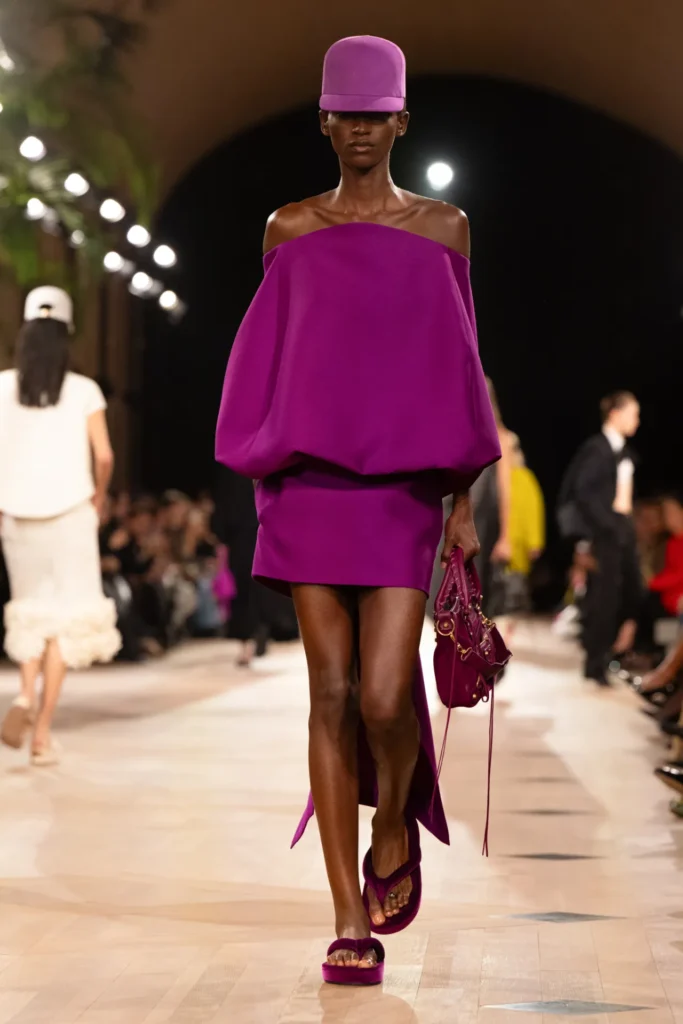
Piccioli’s own signature, however, glowed unmistakably through the seams. His mastery of color, his command of sculptural drape, and his instinct for romance redefined the house’s codes with new emotional depth. He infused sensuality with restraint — cropped leather tops exposing sculpted collarbones, crisp shirts cut just above the ribs, their minimalism radiating power rather than provocation.
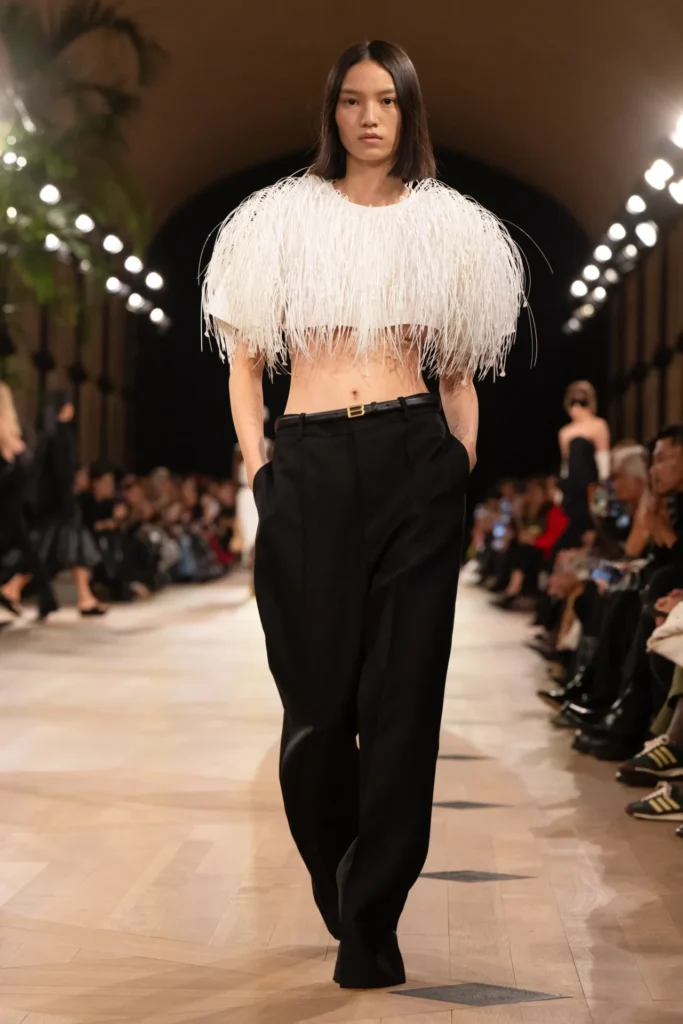
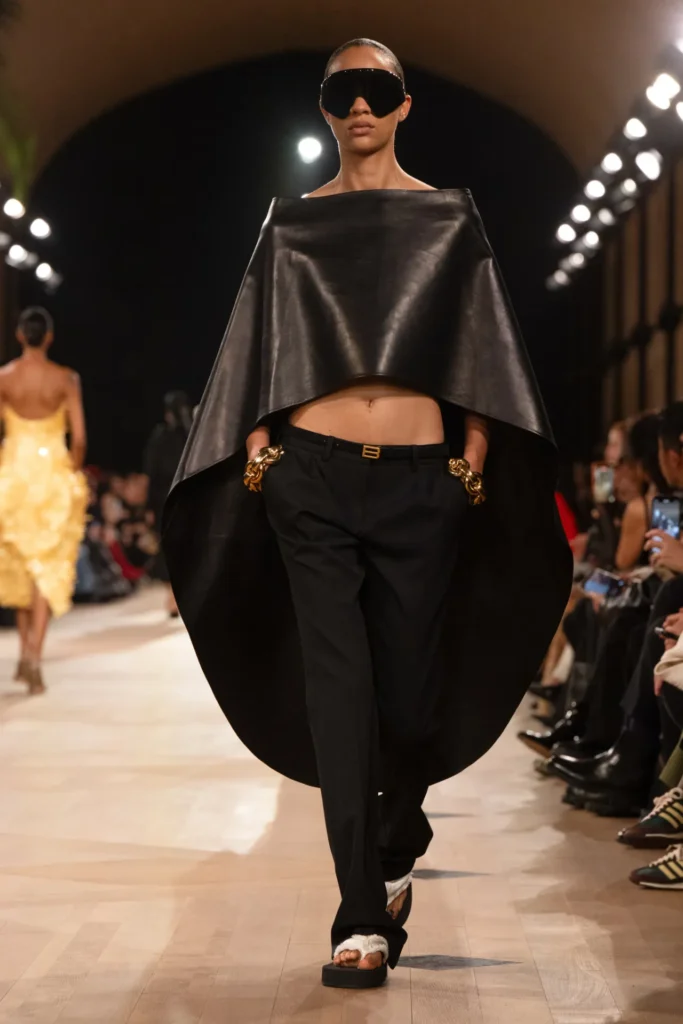
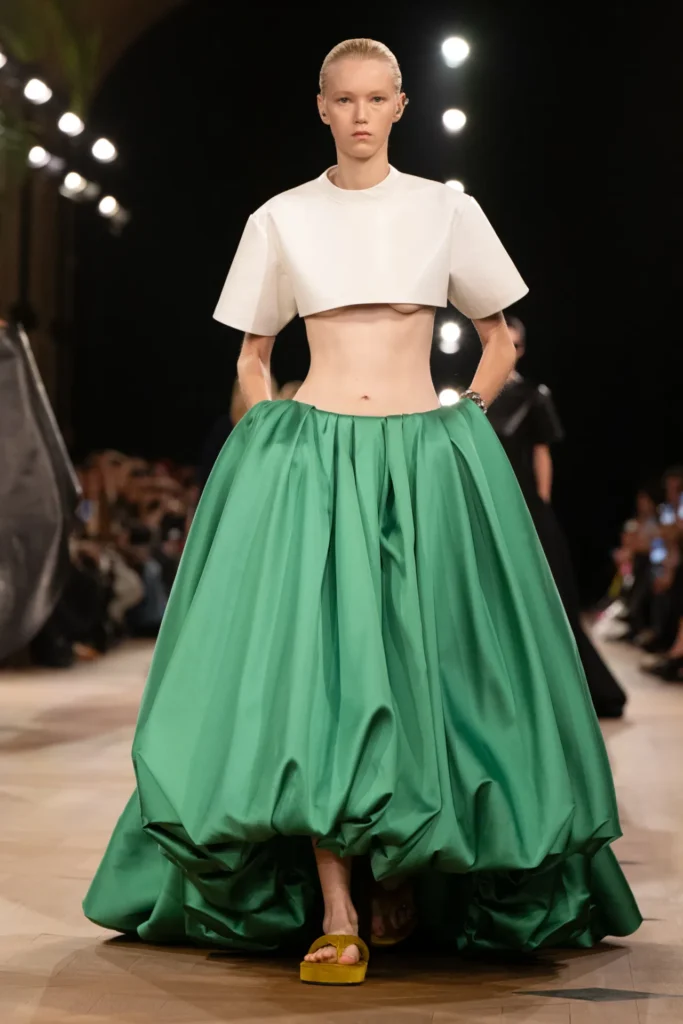
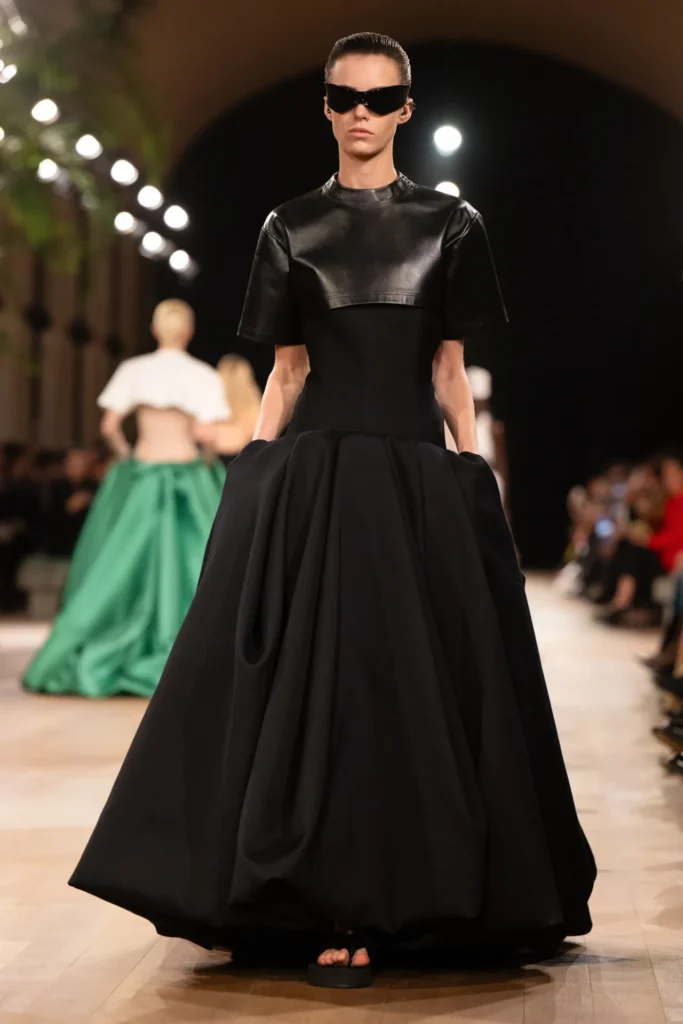
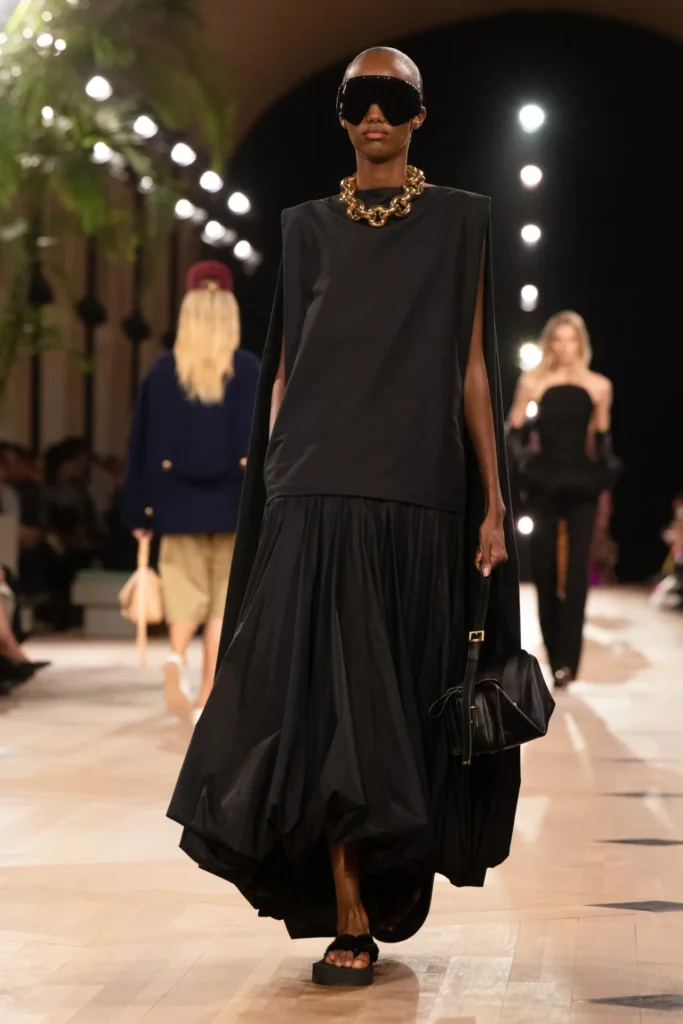
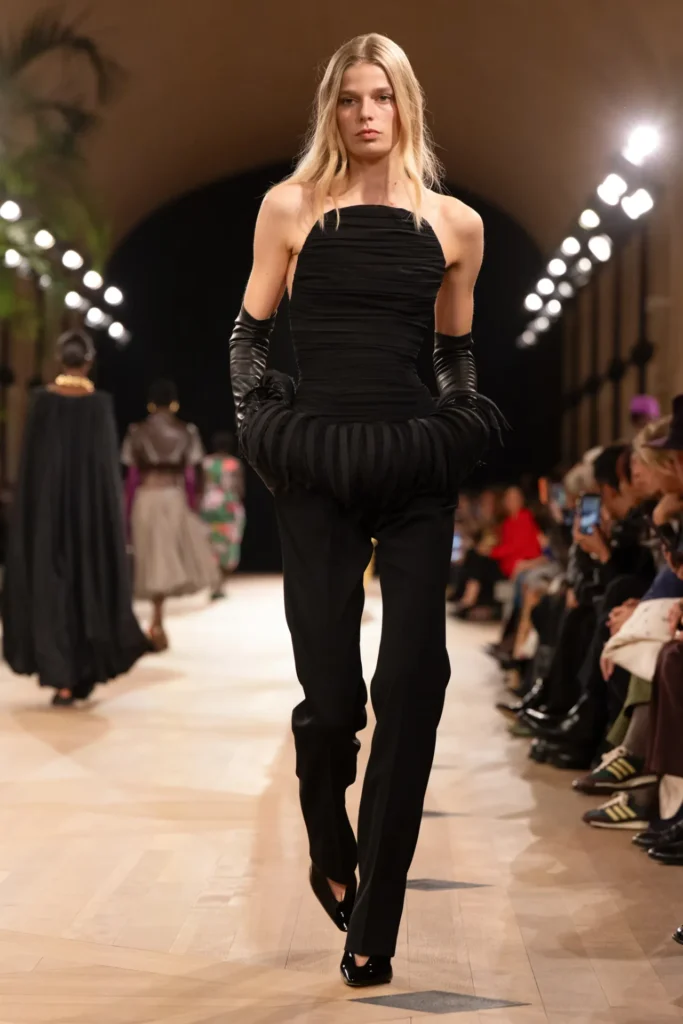
After taking a year-long creative pause following his departure from Valentino, the Italian designer returned with a collection that balanced humility and grandeur. It was both homage and renewal — an act of grace disguised as audacity. And while the show opened with a sack dress — that 1957 innovation that once scandalized the fashion world — it closed with a whisper of modern liberation. In Piccioli’s hands, Balenciaga once again became what it was always meant to be: not a brand chasing the moment, but a timeless study in how form becomes feeling.

